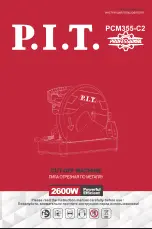
248
Glossary
10Base-T/100Base-TX
An Ethernet standard for cable.
The 10/100 refers to its 10/100 Mbps bandwidth, the base to single channel baseband, and
the T to the Twisted pair.
The cable uses two pairs of unshielded twisted wires.
ABBR. No. (Abbreviated
Number)
The ability to store a full telephone number or email address into the dialer and then utilizing
a short series of keystrokes to speed dial that number in the future.
Access Code
A 4-digit programmable access code that prevents unauthorized operation of your Fax.
ADF (Automatic
Document Feeder)
The mechanism that delivers a stack of document pages to the scanner one page at a time.
Auto Print Reduction
The method of automatically reducing a received document so that it can be printed onto a
standard size piece of plain paper. For example, your machine will reduce an incoming legal
size page to 75% of its original size so it could fit on a letter size page.
Automatic Reception
The mode that allows you to receive fax documents without user intervention.
BPS (Bits Per Second)
The amount of data that is transmitted over the phone line. Your machine can start at each
Max. Modem speed and automatically steps down to suitable speed depending on the phone
line condition and the receiving machines capabilities.
CCITT
Consultative Committee on International Telegraph and Telephone. This organization has
presently developed four groups of industry standards that insure facsimile compatibility.
Character ID
A programmed proprietary code name that allows up to 16 alphanumeric characters
identifying your machine.
Character Keys
The keys that are used to enter letters and symbols for various programming functions.
Client
Clients are computers that run software programs used to contact and obtain data from
Server software program on another computer, often across a great distance.
Coding Scheme
The data compression method used by machines. Your machine utilizes Modified Huffman
(MH), Modified Read (MR) and Modified Modified Read (MMR) coding schemes.
Comm. Journal
Refers to either the Communication Journal, Relay Transmission Report, or the Confidential
XMT Report.
Contrast
Signifies the scanning sensitivity in terms of lightness and darkness of your original
transmitting pages.
Cover Sheet
A Fax Cover Sheet can be attached to your transmit document(s) that shows the recipient's
name, originator's name and number of pages attached.
DDD (Direct Distance
Dialing)
A telephone service that allows unassisted dialing, no operator assistance is required.
Default Gateway IP
Address
This is your Gateway's Address, it is used by other Networks to determine which route to take
when communicating with your Internet Fax.
Deferred Polling
The ability to retrieve documents from other stations at a later time.
Deferred Transmission
The ability to send documents to other stations at a later time.
Delivery Notice
Delivery Notice is a Message Disposition Notification (MDN) request initiated by the sending
IFax to the destination IFax. The receiving IFax replies with a delivery processing
confirmation after the message (email) was read.
Direct Dialing
The method of dialing where you enter the entire telephone numbrer or email address
through the keypad.
Direct SMTP
Allows IFax machines to communicate directly with each other within the Firewall (Intranet)
without going through the Mail Server, thus alleviating the burden on the mail server.
Directory Search Dialing
Allows you to dial a full telephone number or email address by searching the station's name
entered in the One-Touch keys or Abbreviated dialing numbers.
Directory Sheet
The list that contains the station names that are programmed into your unit.
Domain Name
A unique name that identifies an Internet site.
Domain Names always have 2 or more parts, separated by dots.
The part on the left is the most specific, and the part on the right is the most general.









































